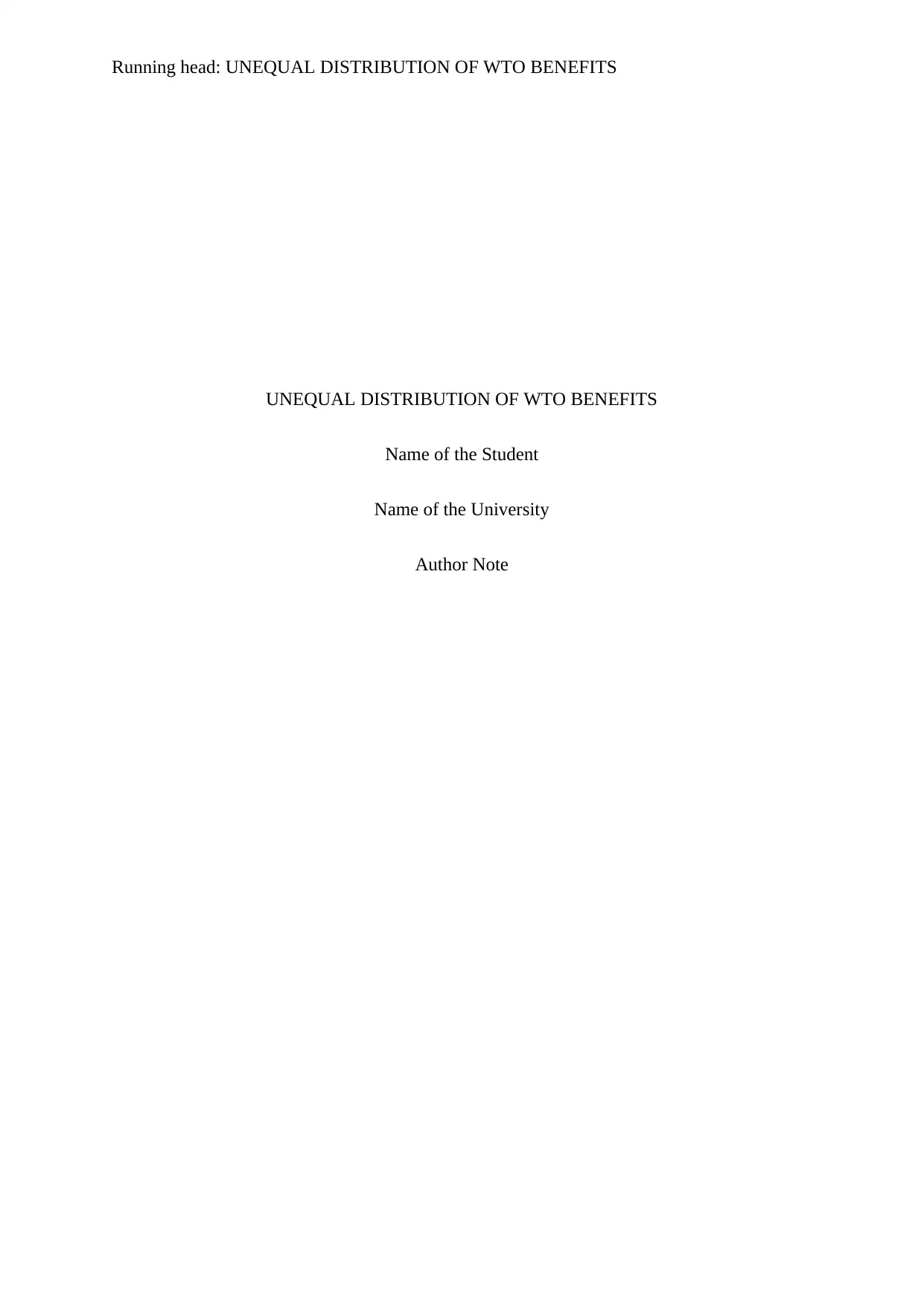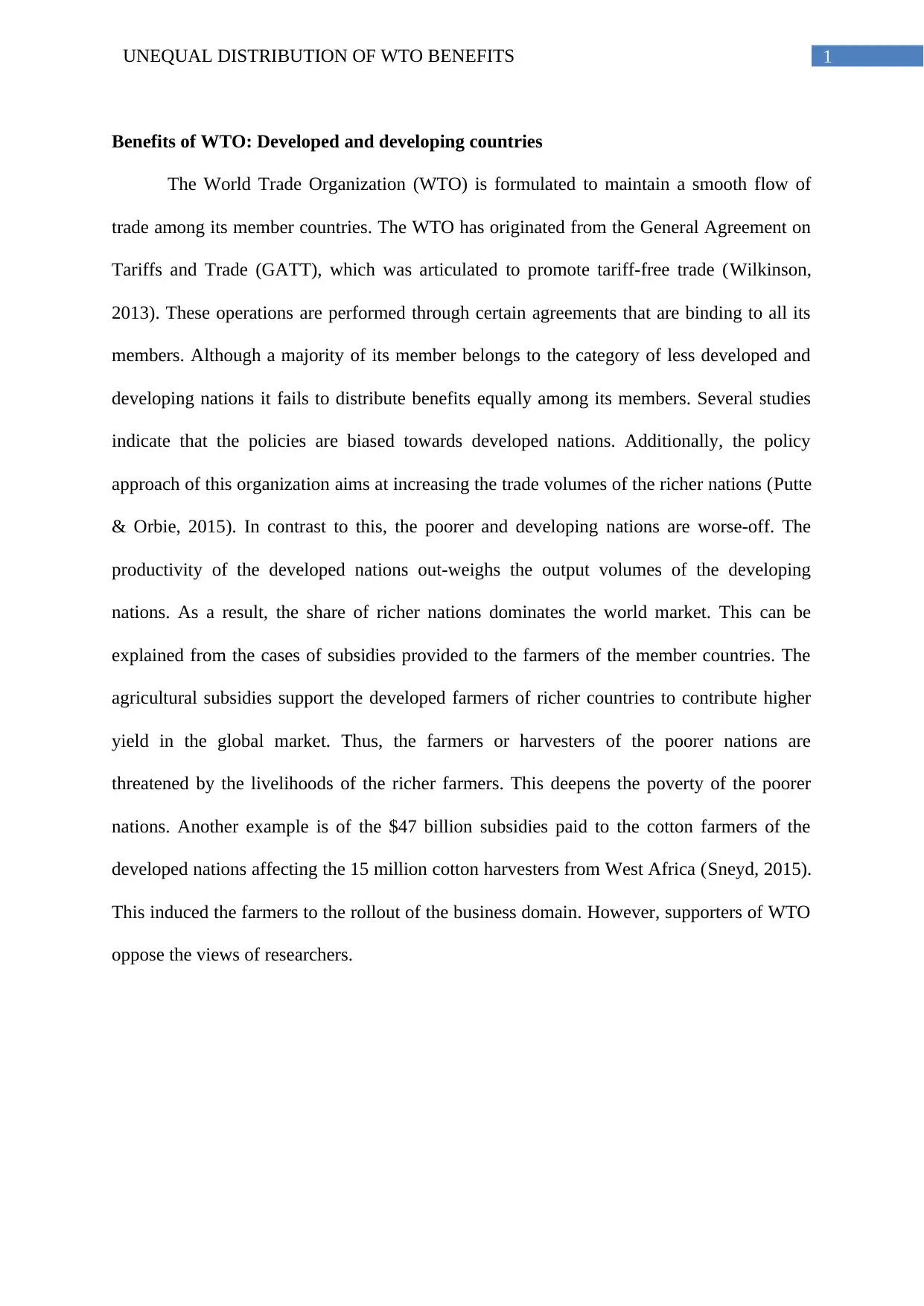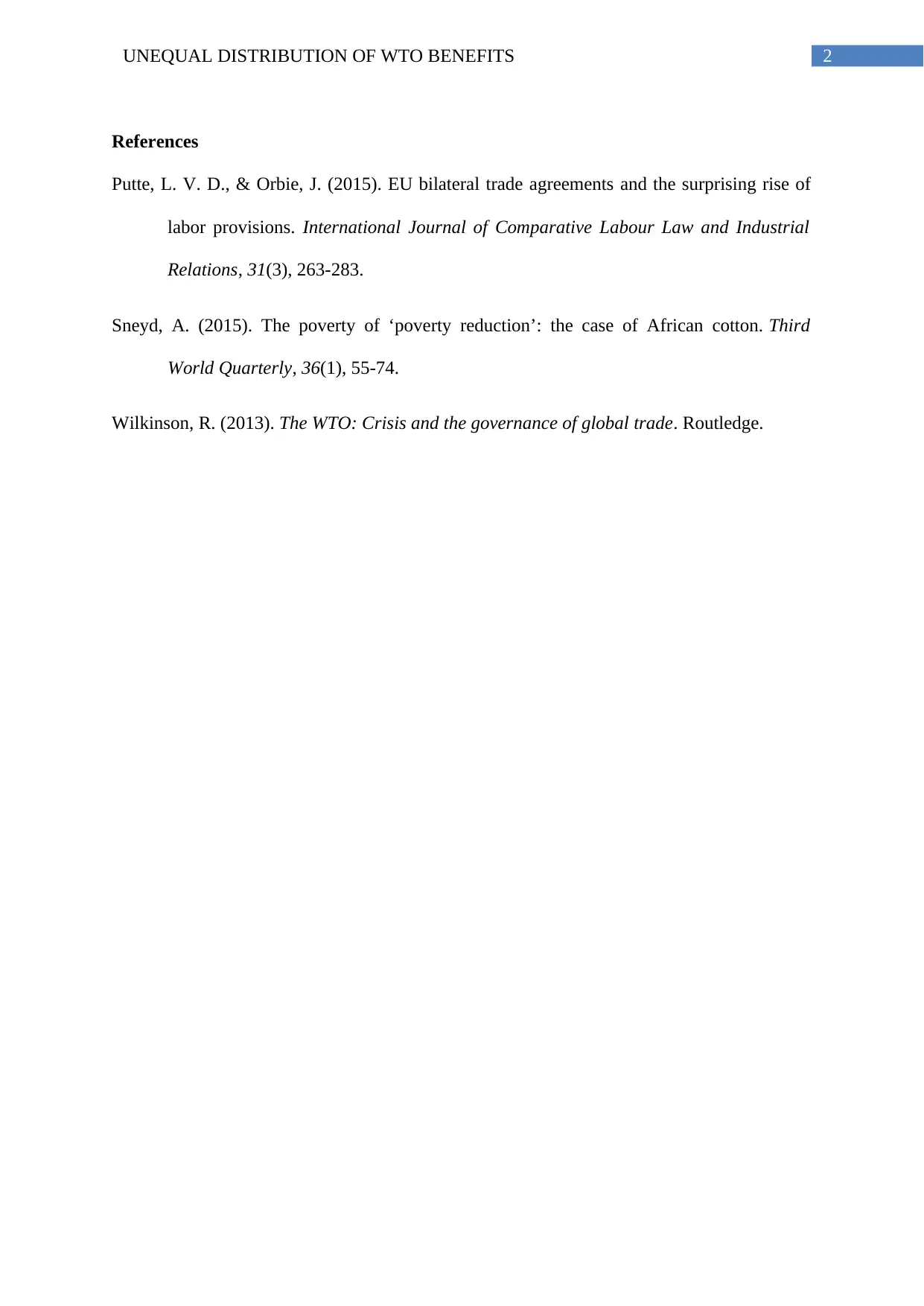WTO Benefits: Unequal Distribution and Impact on Developing Nations
VerifiedAdded on 2022/10/06
|3
|434
|18
Report
AI Summary
This report explores the unequal distribution of benefits within the World Trade Organization (WTO), focusing on its impact on developing nations. The analysis highlights the disparities in trade advantages, emphasizing how policies often favor developed countries. The study examines the effects of agricultural subsidies, such as those given to cotton farmers in developed nations, and their detrimental consequences on farmers in developing countries, particularly in regions like West Africa. The research references studies and provides a nuanced perspective on the challenges faced by poorer nations within the WTO framework. The report concludes that the current structure and policies of the WTO exacerbate economic inequalities, thereby hindering the progress of less developed countries.
1 out of 3







![[object Object]](/_next/static/media/star-bottom.7253800d.svg)